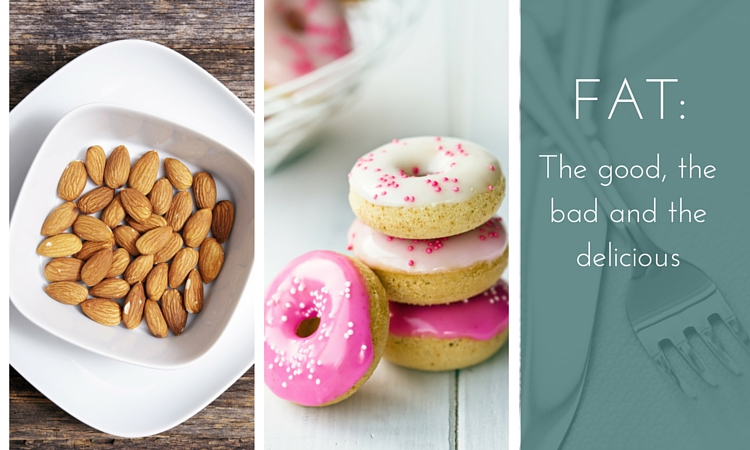Fat is bad for you. No, fat is good for you! Wait, eat this fat but not this one.
If you’ve listened to the news over recent years, you’re likely a little confused about fat in your diet. I know I get that question a lot! The truth is fat is an essential part of a healthy diet, but as you might have guessed, not all fats are created equal.
What’s the purpose of fat?
Good fats – those that come naturally from whole foods – help you absorb certain vitamins essential to body functions. Fats are also crucial to brain health, impacting your learning capabilities, mood, hormones and memory. The USDA recommends that 20 to 35 percent of your daily calorie consumption is made up of good fats. On the other hand, bad fats – which include any human-created or modified oils, known as “trans” fats – have the opposite effect on the body; plus, they increase the risk of heart disease, high cholesterol and other diseases.
So, what can I eat then?
Examples of trans fats include many things that often taste good but we already know are bad for us: fried foods, doughnuts, frozen pizzas, margarine, vegetable oil, French fries—you get the idea. Trans fats often show up in processed foods and can be found on the ingredient list as “partially hydrogenated oils.”
Good fats, however, are easy to incorporate into your diet, and they’re delicious! These include both monounsaturated and polyunsaturated fats, as well as saturated fats (yes, really!) that come from natural sources. Examples include walnuts, almonds, salmon, avocados, olives, olive oil, flaxseed, coconut oil and ghee.
Wait…ghee?
Ghee may be new to you, but this type of clarified butter has actually been around for centuries, originating in ancient India. Ghee is made by simmering butter and removing the liquid residue. Rich in antioxidants, fatty acids, and vitamins A and E, ghee retains the taste of butter but no longer contains the milk solids often not tolerated by many people. In addition, it’s full of butyric acid, a fatty acid also produced in the gut. This acid is believed to boost the immune system by jump-starting the production of T cells, as well as absorbed by the liver and used as energy. (Heck, one of the Nepal earthquake survivors stayed alive under a pile of rubble for two days by eating ghee!)
Ghee also has a very high smoke point, so you can cook with it without worrying about it breaking down into free radicals like many oils. Plus, it doesn’t need refrigeration; some varieties can last up to 100 years because there’s nothing there to spoil!
You can find many brands of ghee in the store, but you can also make your own. I found this great recipe and tutorial on the Real Food for Life website. Here’s what you’ll need:
- One to two pounds grass-fed, organic unsalted butter
- Medium saucepan
- Spoon for stirring
- Fine sieve and/or cheesecloth
- Glass container with tight lid
Once you get the hang of it, try experimenting with various spices such as garlic or turmeric to enhance the final product! Enjoy!
How do you incorporate healthy fats into your diet? And have you tried ghee? Let us know what you think by tweeting @Hope4CancerMex or posting on our Facebook page!


